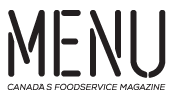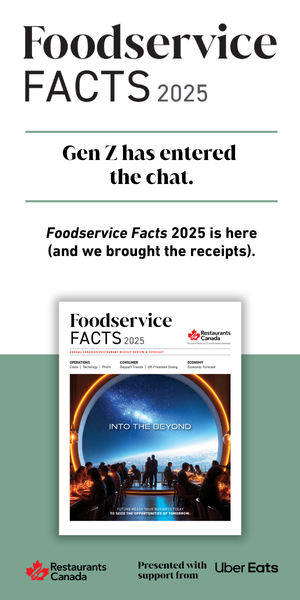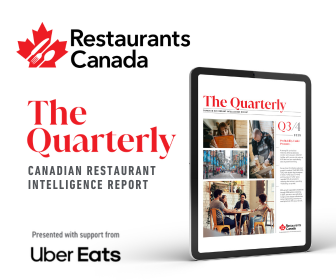The Paradox of Using AI to Bring Back the “Human” in Human Resources
Written by Val Upfold, Principal, Val Upfold Inc.
I still remember the moment AI first surprised me with its potential. Sitting at my desk, I casually typed a prompt into ChatGPT: “Come up with a development plan for a server assistant to grow into a server and, eventually, a manager over the next year.” Within seconds, it returned a comprehensive, step-by-step plan. I was floored. Not only was the response thorough, but it also sparked a realization: we—particularly in hospitality HR—have barely scratched the surface of what generative AI platforms—like ChatGPT which essentially use existing content and data to create new, human-like content, like text, images, video and music.
Over the years, I’ve seen firsthand how the hospitality industry often struggles with the time and resources needed to invest in employee growth and retention. Smaller independent restaurant groups frequently don’t have dedicated HR departments, let alone the tools to craft personalized development plans for their staff. But with AI, the barriers suddenly shrink. From automating administrative tasks to creating actionable career paths, AI isn’t just a tool—it’s an opportunity to reimagine how we support our teams.
The Upside: More time for the “important” work.
One of the biggest pain points in HR, as many of my peers would agree, is the constant triage of urgent tasks at the expense of important ones. AI helps flip this script. Administrative burdens—like crafting job descriptions, developing performance reviews, or designing training materials—can now be handled in minutes rather than hours.
Take training plans, for instance. In my early days at Oliver & Bonacini, we built detailed development checklists to help staff grow from server assistant to server, and eventually, into management roles. It was an exhausting process that demanded hours of focus. With AI, you can achieve the same results almost instantly. You input your objectives, and it generates clear, actionable steps. Suddenly, the focus shifts from creating the tool to using it—spending more time on meaningful conversations with staff instead of on paperwork.
The benefits are not confined to managers and leaders. According to the Stanford and MIT research report, “Generative AI at Work,” in 14 per cent of average-level workers and 35 per cent of low-skilled workers (roughly equivalent to entry-level hospitality jobs) productivity was increased by the use of
generative AI tools. The research also showed that low-skilled workers who were exposed to AI advanced three times faster than those without AI exposure. Perhaps most compelling is the report’s finding that business that use and expose their employees to well-implemented AI tools enjoy a 40 per cent reduction in employee attrition and a 25 per cent decrease in customer requests to “speak to a manager.”
The time-saving value of AI tools extends to recruitment as well. Instead of manually sifting through a mountain of resumes, AI can screen candidates and even identify patterns of potential. For example, I once fed a stack of resumes into AI and asked it to rank candidates based on their cultural fit and growth potential. Not only did it prioritize the candidates I might have chosen myself, but it also flagged overlooked strengths. This allows us to dig deeper into candidates’ potential beyond the surface of their resumes, opening doors for those who might have been unfairly dismissed.
The Downside: Addressing Bias and Enhancing Equity
AI isn’t without its challenges. As businesses start to realize the advantages of generative AI, the risks it poses are also coming into focus, including concerns about data privacy, bias, and potential intellectual property (IP) infringement.
Bias remains a critical concern, and in HR, we have to tread carefully. In March, 2024, the Ontario Government announced the passage of the Working for Workers Four Act, 2024, wherein they introduced legislative amendments to several employment laws in the province. The Act enhances protections
for workers in Ontario while placing new obligations on employers, including a mandate to disclose the use of Artificial Intelligence (AI) in the hiring process, preventing the use of biased AI in applicant tracking systems. Studies have shown that AI often reflects the biases built into its data, favouring men for higher-paying roles or dismissing candidates based on incomplete patterns. These “hallucinations” highlight the need for a careful balance between embracing AI and exercising critical oversight.
But bias isn’t just a tech problem. It’s a human one, and AI can be part of the solution. For example, in restaurants with a high percentage of ESL (English as a Second Language) workers, AI can simplify and
translate training materials, making them more accessible. Verbal testing—once the gold standard in inclusive training—was time-consuming and inconsistent. AI now bridges that gap, helping eliminate bias in how we evaluate skills and support diverse teams.


The Opportunity: Personalizing the employee experience
Perhaps the most exciting frontier AI opens up is hyper-personalization. Gen Z workers, in particular, value tailored career development and meaningful experiences. AI allows us to cater to these preferences by automating routine tasks and freeing up time for one-on-one engagement. Imagine an employee development plan that’s not just comprehensive, but also entirely customized to the individual’s strengths, interests, and career aspirations.
This isn’t just theoretical. In my conversations with industry peers, I’ve seen how some forward-thinking HR leaders are using AI to create bespoke growth paths for their teams. For instance, one HR director at a large hotel chain told me about her AI-driven system that tracks employee goals, sends automated reminders, and even proposes next steps. By removing the manual legwork, she can focus on coaching and mentoring—the parts of HR that truly make a difference.
It’s not the tool, it’s how you use it.
There’s no denying that AI stirs fear in many industries. For some, it’s a threat to jobs; for others, it’s a shortcut that undermines the “real work.” But I’d argue that it’s neither. AI doesn’t replace skills; it enhances them. It allows us to focus on the parts of our jobs that matter most: building culture, fostering growth, and creating spaces where people want to stay.
Hospitality, in particular, stands to benefit. Unlike industries where automation threatens to eliminate roles, ours thrives on the human touch. AI doesn’t cook meals or deliver service with a smile—it makes it easier for the people who do to succeed. It’s a tool to amplify creativity, streamline processes, and reimagine what’s possible.
To realize the full suite of benefits, human resource leaders and operators need to put in the time to anticipate and address gaps and shortcomings in AI applications. They are technologies—tools—designed to be put to purpose by an experienced, thoughtful user who understands they are responsible for applying a critical eye to the raw products and ideas it generates.
As I reflect on my own journey in hospitality HR, I’m struck by how much the landscape has changed—and how much more it can change if we embrace these tools thoughtfully. For operators who say they lack the time or resources to develop their teams, AI offers a solution. For those worried about retention, it’s a game-changer. The question isn’t whether to adopt AI but how to use it wisely. So, here’s my challenge to you: Explore the possibilities. Start small. Use AI to draft your next job description or create a training outline. And most importantly, keep your critical thinking hat on. Trust the technology but verify its results. After all, AI is here to stay—and if we use it well, it might just make our industry stronger than ever.
About Val…
Valerie Upfold has extensive experience in the hospitality industry, having worked in hotels and restaurants in Canada and Australia. Her roles have included Restaurant Manager, Sommelier and HR Director. At Oliver & Bonacini Hospitality, Val spent 15 years—five as Manager and Sommelier at Canoe Restaurant in Toronto, and ten as HR Director, where she established the HR department and grew the company from 100 to over 1,500 employees. With over ten years in hospitality recruitment and HR consulting, Val is a trusted expert for renowned brands. She also conducts food TV casting, identifying top talent for the screen. Val contributes to Centennial College and George Brown College hospitality advisory committees, has lectured at the University of Guelph’s HAFA program, and speaks at industry events nationwide. She volunteers with Catalyste+ to support the hospitality sector in developing markets.









